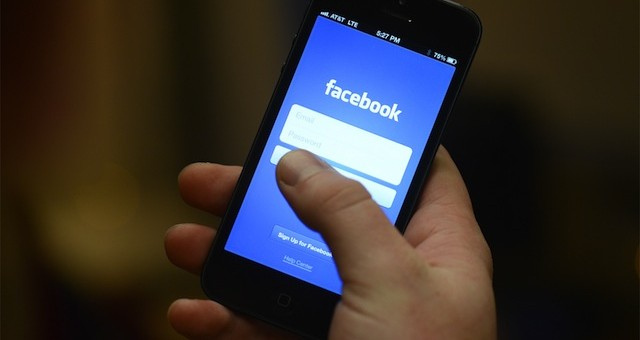Save 50% on a 3-month Digiday+ membership. Ends Dec 12.

Facebook says it wants to lead the digital media industry into an era that is unencumbered by click-based advertising system. But whether digital marketers are ready to follow Facebook’s lead — and whether the change is simply self-serving or truly beneficial to the digital media industry as a whole — remains in question.
The social network announced on Tuesday it would start encouraging more advertisers to shirk existing ad measurement methods in favor of a system it calls “conversion lift.” Conversion lift has been available to select advertisers since December 2013, but will now be available to any advertiser with a Facebook account team.
Current measurement systems are inaccurate, Facebook said in a press release. Rather than accounting for how each ad in a campaign contributes to an eventual sale, they only credit ads that were clicked on. More specifically, they only credit the last ad clicked before the advertised product or service was bought. And they make no record of how a digital ad can lead a consumer to make an offline purchase. Conversion lift, however, uses empirical testing to judge just who effectual every ad in a campaign was.
“Building on existing Facebook measurement offerings, conversion lift allows advertisers to accurately determine the additional business driven by Facebook ads and make future marketing decisions based on this information,” the social network claimed in a statement.
Facebook’s argument presumes that consumers are affected by the ads they see, even if they don’t click through them. These ads should be given due credit, the social network claims. And giving those ads credit would theoretically increase their value to marketers and allow media sellers to raise CPMs.
Furniture retailer Land of Nod began using conversion lift in August 2014, and the results showed the ROI of Land of Nod’s Facebook ads was 20 times greater than previously thought, according to customer acquisition specialist Ashley Jones.
“We saw that the mobile impact of our ads was higher than we anticipated,” Land of Nod marketing director Joe Orlando said.
People who were introduced to Land of Nod via Facebook mobile ads subsequently purchased items on desktops, the test showed. As such, Land of Nod is planning on increasing its Facebook ad spend by 10 percent this year, Orlando added.
While Facebook conceded it had an interest in pushing lift conversion, many in the digital advertising industry have long asked for a more holistic measurement model. Now the second-largest seller of digital advertising in the world, according to eMarketer, Facebook wants to use its position to lead the industry in implementing that change.
Ad industry execs were split as to whether Facebook can single-handedly make that change, though.
“Facebook obviously has an advantage here with their reach, audience data and Datalogix partnership, so it’s self-serving to that extent,” Eric Franchi, co-founder of ad tech company Undertone, told Digiday. “But any effort to help properly value the impact of display advertising is positive for the industry and publishers. Facebook’s size and clout helps give them as good a shot at shifting the conversation as anyone.”
Jeanne Bright, vp and director of paid social at digital agency DigitasLBi, said that she’s interested in using conversion lift, though it might be tough to sell clients on. For one, it requires brands to upload their CRM data to Facebook, and a brand needs to have a sizeable CRM database in order to achieve statistically significant results.
“The methodology is as sound as Facebook says. But, it does require a full buy-in to the tech requirements, which can be quite overwhelming,” she said. “Facebook alone will not have the clout to change the industry by itself, although it’s going down the right path.”
The announcement made no mention of Atlas, the ad server Facebook bought in February 2013 and re-released last fall. Facebook claimed Atlas will help advertisers measure the effectiveness of ads across devices, and Facebook spokesman Tim Rathschmidt said “our goal is to bring this type of measurement across all of Facebook, so it’s likely that this will extend to Atlas in the future.”
Sean Muzzy — North America CEO of Neo@Ogilvy, Ogilvy’s performance advertising division — agreed that there was progress to be made.
“The broader challenge is moving outside of Facebook campaign level analysis and understanding the influence other, less addressable, touch points had on sales. The struggle to understand the full journey remains,” he said. “Ultimately, if this helps drive the conversation and focus beyond click metrics, that’s a success.”
Correction: An earlier version of this article incorrectly stated that data firm Datalogix was part of conversion lift.
Image via Shutterstock
More in Media

As big brands flood the podcast ad space, startups are refining strategies to stand out
While a influx of big advertisers is good news for podcast companies, it also makes it more challenging for small- to mid-sized brands to stand out in the space.

Meta enters AI licensing fray, striking deals with People Inc., USA Today Co. and more
The platform has secured seven multi-year deals with publishers including CNN, Fox News, People Inc., USA Today Co to incorporate their content into its large language model (LLM) Llama.

European publishers say the Digital Omnibus ‘cookie fix’ leaves them worse off
The European Union’s attempt at a legislative spring clean for Europe’s web of data privacy rules, has landed flat with publishers.





